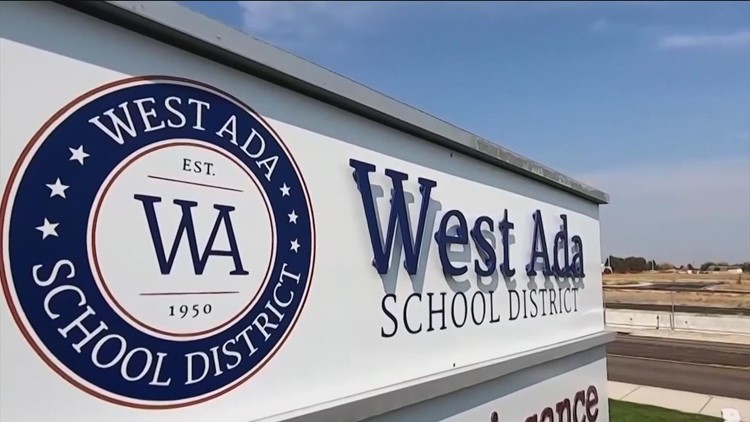BOISE, Idaho — This article originally appeared in the Idaho Press.
Misinformation within West Ada School District has created a “firestorm” over the past month surrounding the district’s Gifted and Talented program, according to program coordinator Jenny Mundy-Castle.
During a board meeting in February, and several meetings following it, nearly a dozen parents spoke to the West Ada School Board, bringing in notes from their elementary-aged kids, fighting for the district’s GT program to stay. Rumors that a GT teacher was being fired also flew around the district, according to Mundy-Castle.
The Gifted and Talented program is for students who have unique academic needs that exceed what a general education teacher can provide. GT students are typically accelerated in specific areas of curriculum, not necessarily putting them above grade level in each subject. Most gifted students are discovered through their academic data and after referral forms and testing is completed, gifted students are served by the district, at pilot sites (boundary schools) or pull-out services.
“I really like GT, and I think it would be sad if you change it,” one note from an 8-year-old said, read aloud during a board meeting last month. “If we move GT into the regular classrooms, some of the best teachers could lose some of the work that they love. It wouldn’t be fair, and it isn’t right.”
But, according to district Chief of Staff and Communications Director Niki Scheppers, the GT program in the district was never in danger — having a program for Gifted and Talented students is an Idaho state requirement for school districts.
The misinformation that led parents to various board meetings, particularly the one on Feb. 12, came straight from one staff member, who Scheppers declined to name.
“This teacher specifically did not seek to understand or clarify and just made a lot of assumptions and unfortunately, the wrong assumptions,” Scheppers said during an interview with the Idaho Press. “Nobody has been released. Nobody has been terminated. There was no reduction in FTE (federal trade equivalent).”
GT students are going to continue being identified and served by the district, but the method of that service is changing a bit, Mundy-Castle said.
Last week, the district sent out emails to families and staff who would be affected by these updates to the GT program currently in the district. According to an email sent to GT staff members, GT contained services are going to be an option for students who qualify, and GT push-in services will take place at various pilot site elementary schools — Ustick, Peregrine, Star, Andrus, Eagle, Eagle Hills, Galileo and Seven Oaks — beginning next school year.
According to Mundy-Castle, after researching many different avenues of serving GT students, the district has found a way that doesn’t require busing. In other words, GT will be available in more schools next fall.
“Our goal is to continue that so we’re serving all of our GT students in their home boundary schools,” Mundy-Castle said.
In the fall, GT students will be clustered together in their boundary schools, where an assigned GT facilitator will come to assign them curriculum in their gifted areas (some GT students are gifted in math, others language). Instead of being in pull-out groups, where students are pulled out of school and bussed somewhere else, students will stay at their home school and come together.
“It’s literally the same curriculum we’ve used for pullout, we’re just doing it on site,” Mundy-Castle said. “Essentially, we’re offering the same two services we offered before, just at the home school.”
There will be a total of three GT facilitators, each assigned two schools. According to Mundy-Castle, each facilitator’s case load will be around 40-50 students. GT facilitators will be specifically focusing on each student’s gifted subject, not their entire curriculum. The system is very similar to special education, Mundy-Castle said.
Typically, around 5%-6% of every school population is GT, Mundy-Castle said.
“Right now, many of our schools are nowhere near that,” Mundy-Castle said. “And some of our schools are above that. And a lot of that has to do with the fact that we’ve been relying mostly on referrals, teacher and parents.”
Identifying those students can be tricky, Mundy-Castle said. By having GT students clustered together at their boundary schools, with GT teachers popping in and out throughout the school year, the district hopes to identify more GT students and get them into the program sooner. The more students who are able to access GT services at their boundary schools, the more students will receive the special services they need, Mundy-Castle said.
“That’s why this is so important: we want to ensure that we’re actually serving all of our GT students, not just the ones whose parents are aware of it,” she said.
This article originally appeared in the Idaho Press, read more on IdahoPress.com.
Watch more Local News:
See the latest news from around the Treasure Valley and the Gem State in our YouTube playlist:
HERE ARE MORE WAYS TO GET NEWS FROM KTVB:
Download the KTVB News Mobile App
Apple iOS: Click here to download
Google Play: Click here to download
Watch news reports for FREE on YouTube: KTVB YouTube channel
Stream Live for FREE on ROKU: Add the channel from the ROKU store or by searching 'KTVB'.
Stream Live for FREE on FIRE TV: Search ‘KTVB’ and click ‘Get’ to download.



